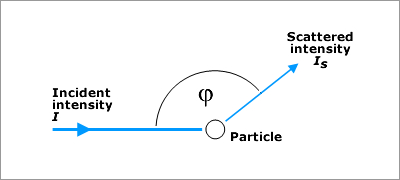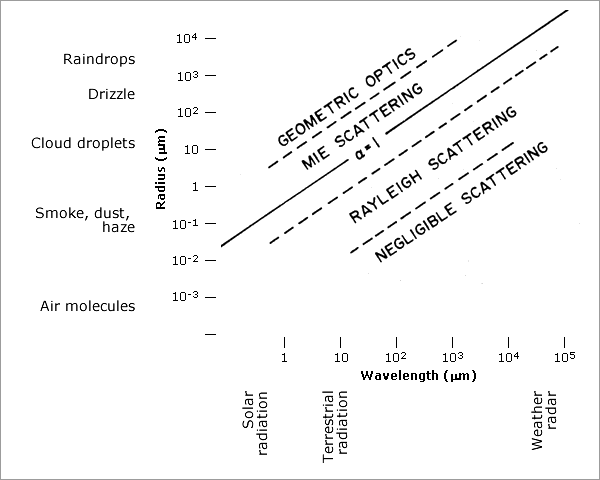Scattering occurs when molecules and particles in the atmosphere absorb photons and then re-emit them. A significant proportion of scattered solar radiation at short wavelengths is redirected back to space. The amount of scattering that takes place is dependent on the number of scattering particles present in the atmosphere, the size of the molecule or particle that scatters the radiation and the wavelength of the incident radiation.
Usually, scattered photons have the same wavelength but not the same direction as the original photon. This type of scattering can be termed elastic scattering because the energy of the scattered photons is not changed. Rayleigh and Mie scattering can be considered to be elastic scattering. Raman scattering is inelastic, since the scattered photons have either a higher or lower photon energy.
Mechanisms of scattering are:
- Rayleigh scattering, which is elastic scattering of visible wavelengths by molecules.
- Mie scattering, which is elastic scattering by large particles such as aerosols and droplets.
- Raman scattering, which is inelastic scattering by molecules
- Geometric optics, such as reflection and refraction.
The phase function P(φ) gives the distribution of scattered intensity as a function of scattering angle; the integral over all scattering angles is 1.

Fig 2.2.2.2.1: Phase function.
Image: AT2-ELS
Scattering can be both a sink and a source of radiation:
The loss by scattering is treated in analogy to absorption with a scattering cross-section σs:
dI = -I0 σs(λ) n dL
The loss by absorption and scattering is often combined and called extinction, and is represented by the extinction coefficient:
ke = ka + ks
The amount of radiation gained by scattering is given by the amount of light coming from a given direction multiplied by the scattering probability into the direction of interest integrated over all possible directions:
where P(φ, φ') is again the phase function.
Depending on the ratio of the size of the scattering particle (r, particle radius) to the wavelength, λ, of the light, the so called Mie parameter or size parameter (dimensionless),
α = 2πr/λ,
different regimes of scattering of light from the particle can be distinguished:

Fig 2.2.2.2.2: Scattering regimes.
Image: AT2-ELS